HIStalk Interviews Jan De Witte, CEO, GE Healthcare IT
Jan De Witte is president and CEO of GE Healthcare IT.

Describe your job.
I run our healthcare IT business globally. I would summarize it as four big categories. Enterprise imaging. Care delivery management — care pathways inside the hospital in the departmental areas and ambulatory care. Population health management, our joint venture with Microsoft in the Caradigm company. Then financial management, revenue cycle management, and cost analytics or margin management.
We have different global product managers that run these categories. We commercialize and implement our systems pretty much across the world, with the US as the main market. The US makes up more than 60 percent of our business activity.
What is the status is of the Healthymagination project?
Healthymagination started several years ago. It is a focus of GE and GE Healthcare to drive outcomes in healthcare, specifically cost, productivity, and clinical quality outcomes.
As of two or three years ago, that program has matured in the sense that it has changed, shifted how we do product management on our equipment and our software. Our product managers start with outcomes in mind and then develop technologies that drive those outcomes. Before, we often — like many other companies — developed great technology without necessarily touching the outcomes that our customers needed.
That’s how I would say Healthymagination has morphed from initiative several years back to today — a different culture and capability within our project management.
Siemens is another multi-national conglomerate and they apparently want out of the healthcare IT business. How do you see GE Healthcare IT positioning itself going forward against competitors that focus exclusively on healthcare IT?
On the Siemens-specific question, I’ve gotten questions from both customers and our employees.
There’s two elements to be asked. First, GE Healthcare, my mother company, is fully committed to driving outcomes in healthcare. If you look at the challenge for healthcare, it’s information technology that is going to be the big enabler to drive both productivity and quality. Going back to what we said on Healthymagination, we’re more than ever committed to building out our healthcare IT capabilities to fulfill that mission to make a difference in healthcare.
For the second dimension, I’m sure you’ve heard about the industrial Internet and Jeff Immelt’s commitment to building out GE’s software capabilities. What’s true in healthcare is true in many other industries. The next generation of driving improvement is going to be linked to data, analytics, and using those insights to drive better processes. From Jeff Immelt down, there’s more commitment than ever to be a significant player in software.
Those two together — my direct manager and Jeff Immelt — are fully committed to building out our healthcare IT capability. Close to half of GE’s software activity. Getting a lot of help and support from our San Ramon center of excellence to build out capabilities.
Describe how the industrial Internet fits into what you’ll be doing differently within your software areas.
Let me start with the vision of the industrial Internet. The way we put it is minds to machines can bring intelligence to machines or through machines that generate data, no matter which industry you look at. Process improvements, if you only take one percent, it’s tremendous value you can generate.
The vision of GE is, let’s complement our deep capabilities in developing excellent machines with deep software capabilities to complement those machines, take the data that comes off these machines, and make either the machines or the process around the machines more efficient. This can go from reading data from jet engines and understanding how to make them operate at higher fuel efficiencies to taking planning information from train scheduling and optimizing, planning, and routing and asset utilization in railway operations.
I’ll come to healthcare in a minute, but the commitment of GE is translated into our center of excellence in San Ramon on the West Coast, where we have about a thousand engineers today building out a cloud-based platform which we call Predix. Essentially it is all the next-generation cloud-based platform capabilities that either myself or colleagues of mine in other GE businesses will leverage to build analytics and workflow solutions on.
Very concretely, the industrial Internet initiative of GE is providing me, as a healthcare IT leader, with next-generation platform capabilities that over time will be reflected in the re-platforming of some of my current legacy applications, or brand new analytics applications that we’re building on the Predix platform right away.
How do you see the role of Centricity and how will that change with the industrial Internet?
Centricity is essentially the umbrella brand across the breadth of our portfolio. A couple of years back, we made a decision to focus the Centricity portfolio on what internally we called the next innings in healthcare. It’s clear over the past five-plus years that the whole healthcare industry has been focused on digitization — turning film into digitized information, turning paper into digitization with fax systems and with EMR systems. That’s only the first stage in any industry that goes through an industrialization phase.
We decided, from an R&D perspective, to start focusing on the next innings, which is going to be about analytics and workflows. We start to see today the next inning taking shape.
Within the Centricity portfolio, if I look at our Centricity enterprise imaging solutions, today those solutions are focused on enhancing diagnostic speeds and diagnostic confidence. Not just within one department, but across the enterprise, even across regions or countries. The same for our care delivery management, whether that’s Centricity anesthesia or peri-op solutions or ambulatory EMR. They are increasingly becoming systems to enable predictive care pathways. Our revenue cycle management solutions are increasingly becoming risk and profitability management tools.
With our products, all of them, our R&D is focused on providing analytics capabilities and workflow capabilities in these tools rather than digitizing. The Predix platform is a service-oriented cloud-based platform that is enabling us to build out the analytics capabilities, to build out the right user interface and user experience, and to build out the security capabilities that we are needing in that next generation of IT solutions for healthcare.
Are we in a post-EMR era and moving to analytics, connectivity, and the power of the network?
The short answer is yes. We are, definitely. I hear that from many of our customers. It started one or two years back when they said, we’ve invested a lot of money in bringing in a great EMR. We have realized today that we are not really changing our operation yet. In fact, in some cases, our physicians are less productive than we thought because they spend more time inputting data into systems.
There’s a little bit of a disappointment of the realization that the EMR is, I would call it, the necessary evil to enable the real phase of information technology, which is turning all of that data into actionable insights, and then using those insights into different workflow applications that enable caregivers to collaborate with each other across the different departments and even across geographies.
I see and I hear from my customers that there’s need for next generation. Everybody at this point is talking about population health management, which I think is the ultimate of workflow and analytics at the healthcare system level.
Along those lines, the work that GE Healthcare was doing with Intermountain was going to result in a lot of that, but they’ve moved to Cerner. What was the result of that partnership and why didn’t it continue?
The results or the intellectual property of the partnership today is to a large extent sitting into Caradigm. If I look at the models around clinical data structures, analytics, and protocol adherence type applications, all of that is in Caradigm.
The choice of Intermountain to go to Cerner, frankly I will not comment too much on. It was essentially a choice on how they wanted to implement some of the intellectual property into their operation. The work that we’ve done over the years with Intermountain, the intellectual property, is sitting into Caradigm today, with many of the leaders that were on the project now in Caradigm.
Is GE Healthcare IT happy with Caradigm’s progress?
We’re very happy with Caradigm. Caradigm today is still, to a large extent, what we call the Caradigm Intelligence Platform. The ability to get to the data, wherever it is. Then you have the Caradigm analytics and the Caradigm population or care management suite of applications.
When we started Caradigm, we had all three components in mind. The first two go back to what we were doing with Intermountain. The population or the care management part, at that point already we were co-developing with Geisinger — care management applications for the Geisinger Health Plan. When we started Caradigm, we never gave too much visibility to it, although it was part of Caradigm on the formation of the company.
Over the past two years, much to our surprise and probably delight, the need for population health management has taken off way faster than what we assumed. We were well positioned. We have stepped up our focus on building out that suite of applications.
We’re very happy with Caradigm because it feels like we were at the right time in the right place in the industry. It’s very early days for population health management. We feel we have a very good and broad set of applications that enable population health management, from getting to the data to understanding your cohorts to setting up care management programs and linking into wellness and home health.
At the same time, when I look at population health today, there’s a lot of people who are claiming to have solutions. I consider 2014 and 2015 as the period where there’s going to be the selection made between PowerPoints and proof points. I see Caradigm as a company that will have the proof points. Everybody has the PowerPoints today. Over the next 12 months, we’ll figure out who has the real proof points of having solutions, analytics, and workflow that enable population health management and tremendous impact on the cost of healthcare.
Are your health system customers asking you to help guide them in operational improvement and population health management?
There’s a mix. I’m pleasantly surprised that many of the integrated delivery networks, which are the first ones getting on board, have brought on board people that have the right vision and the right capability.
My perception is that the need for consulting is lower than what I would have said three years ago. We bring with our technology the basic implementation consulting, but from a strategy consulting — how to set up population health management — I perceive most of the leading implementers today, having brought on board good people, smart people that know how to do that. Many of them have been experimenting. They now want to leverage technology to enable the rollouts on a broader scale.
What are the most innovative projects you’re working on that will come to fruition in the next two or three years?
We are very much focused at this point on building out our cloud capabilities, specifically in the imaging area. This is the area where we’ve leveraging to the fullest the new capabilities that GE has built in San Ramon.
At the last RSNA, we launched Centricity 360, a case exchange capability that complements our imaging capabilities. We’re further building out that case exchange capability to true collaboration capabilities that seamlessly enable institutions to collaborate together, to collaborate with affiliated and non-affiliated caregivers. First in the imaging diagnostic space, but with the technology, the platform itself is extendable to any form of collaboration. That’s one where we have the first betas.
At the next RSNA, we’ll come out with the next generation. It has the promise of bringing true cloud capabilities to healthcare and being a big enabler of allowing a very flexible way for caregivers to collaborate with each other.
Do you have any concluding thoughts?
On top of our vocabulary is outcomes. With your question on Healthymagination, what this industry needs is outcomes, not necessarily more technology. Specifically in the US, a lot of money has been spent putting technology in place. The industry has not fully gotten the outcomes for that yet in terms of productivity and quality. That’s where we’re focused.
At GE, we have the benefit of seeing different industries, also seeing how different industries have gone through different phases. I see today a lot of parallels in healthcare versus what I saw happen in airlines in the ‘90s. I’m 15 years with GE, all of it in healthcare. Before I joined GE, I was in other industries. It’s exciting to see that healthcare today is going through the same transition that other industries have gone through. Digitization and then using all that information to enable networks to operate as networks and to turn data into insights and better decisions.
I think the next 10 years in healthcare are going to be probably the most exciting ever. For those people working in the IT side of healthcare, it’s probably the best job in the world for the next decade, using technology to totally change the industry for the better.
Forums like HIStalk … the more we can enable and pump up people in IT to drive the healthcare industry, the more we’ll be part of something beautiful. This industry will not look the way it looks today 10 years from now. That’s a given.




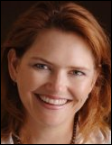
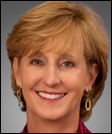


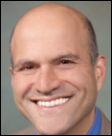




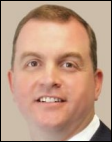
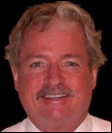



Ageed Mike, "patients are the widgets that must be processed" additionally when it costs close to $3,700 a month for…